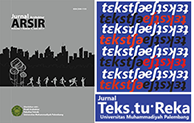Desain Biofilik pada Gedung Sekretariat dan Laboratorium Fakultas Sains dan Teknologi Universitas Ngurah Rai
Sari
Kata Kunci
Teks Lengkap:
PDF (English)Referensi
Arton, J., dan Pretty, J. 2010. "What is the Best Dose of Nature and Green Exercise for Improving Mental Health? A Multi-Study Analysis." Environmental Science & Technology 44:pp. 3947-3955.
Browning, W.D.,Ryan, C.O., dan Clancy, J.O. 2014. 14 Patterns of Biophilic Design. New York: Terrapin Bright Green, LLC. p. 3-4, p. 47.
Downton, P.,Jones, D.,Zeunert, J., dan Roös, P. 2017. "Biophilic Design Applications: Putting Theory and Patterns into Built Environment Practice." The International Conference on Design and Technology, Geelong, Australia.
Hähn, N.,Essah, E., dan Blanusa, T. 2020. "Biophilic design and office planting: a case study of effects on perceived health, well-being and performance metrics in the workplace." Intelligent Buildings International 12:p.16.
Heath, O.,Jackson, V., dan Goode, E. 2018. Creating Positive Spaces Using Biophilic Design. p.3, pp. 24-27.
Herzog, T.R., dan Bryce, A.G. 2007. "Mystery and Preference in Within-Forest Settings." Environment and Behavior 39 (6):pp. 779-796.
Hildebrand, G. 2000. The Origins of Architectural Pleasure. Berkeley: University of California Press. p. 71.
Ikemi, M. 2005. "The Effects of Mystery on Preference for Residential Façades." Journal of Environmental Psychology 25:pp. 167-173.
ILO. 2010. List of occupational diseases (revised 2010). Geneva: ILO.
Kellert, S., dan Calabrese, E. 2015. "The Practice of Biophilic Design." www.biophilic-design.com.
Kellert, S.R. 2008. "Dimensions, Elements, and Attributes of Biophilic Design." In The Theory of Biophilic Design, edited by Stephen R. Kellert, Judith H. Heerwagen, dan Marti L. Mador, p. 3, p. 10. United States: John Wiley&Sons, Inc.
Kellert, S.R.,Heerwagen, J.H., dan Mador, M.L. 2008. Biophilic Design: The Theory, Science and Practice of Bringing Buildings to Life. Hoboken, New Jersey: John Wiley & Sons. p. 123.
KementerianKesehatan. 2011. Pedoman Tatalaksana Penyakit Akibat Kerja bagi Petugas Kesehatan: Gangguan Kesehatan Akibat Faktor Psikososial di Tempat Kerja. Jakarta: Kementerian Kesehatan Republik Indonsesia p. 11-12.
Ryan, C.O.,Browning, W.D.,Clancy, J.O.,Andrews, S.L., dan Kallianpurkar, N.B. 2014. "BIOPHILIC DESIGN PATTERNS Emerging Nature-Based Parameters for Health and Well-Being in the Built Environment." International Journal of Architectural Research 8 (no. 2):p. 62–76.
Williams-Monier. 1872. A Sanskrit-English Dictionary. London: Oxford: At The Clarendon Press. p. 274, p. 382, p. 1297-1298.
Wilson, E.O. 1984. Biophilia. Cambridge, Mass. and London: The Harvard University Press. p.1.
Yin, R.K. 2001. Studi Kasus (Desain dan Metode). Translated by M. Djauzi Mudzakir. Jakarta: PT Raja Grfindo Persada. p. 1.
DOI: https://doi.org/10.32502/arsir.v5i2.3764
Refbacks
- Saat ini tidak ada refbacks.
Indexed by:

Arsir : Jurnal Arsitektur is lisenced under a Creative Commons Attribution-ShareAlike 4.0 International License.









